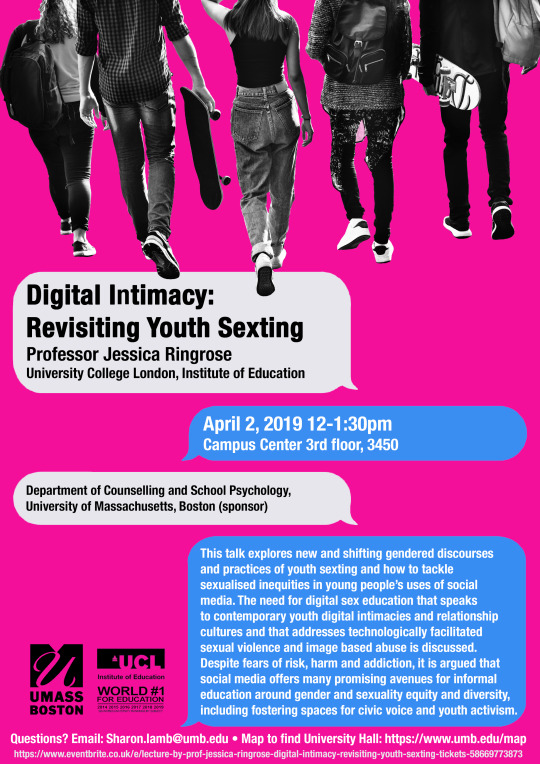Video
vimeo
2015 film-essay edited from the following material (as per the guidelines of my undergraduate module)
Le Cinema à Vapeur, compilation of films by the Lumière brothers (André S. Labarthe, 1995)
Une Séance Méliès, compilation of films by Georges Méliès (Jacques Meny, 1997)
North by Northwest (Alfred Hitchcock, 1959)
Mean Streets (Martin Scorsese, 1973)
Grave of the Fireflies (Isao Takahata, 1988)
The Piano (Jane Campion, 1993)
Monsoon Wedding (Mira Nair, 2001)
Transcript available after this essay.
Audiovisual Criticism: reflective disclosure
My Audiovisual Criticism film-essay is called reflective disclosure, as it is an experimentation on film’s phenomenological nature. An initial approach to this piece was inspired by Edward S. Small’s enquiry: “could images themselves provide high level cognitive functions, functions that could bypass the potentially muddy mediation of linguistic signs?” (1994: 6). Mixing elements of direct and written theory, I based my research on some fragments of the footage that was available to us (module guidelines), disregarding any narrative continuity. The progress and interpretations of this experiment are consigned in written form, hence completing the circle of direct and written theory. I will analyse my research on the notion of filmic experience, and how these experiments led me to insightful discoveries on disclosure and world experiencing through filmic language. These notions stem from phenomenology, and in particular Martin Heidegger’s works— the terminology used here takes his research as a point of reference. An individual’s experience of what is happening in the world, their acknowledgement of what the world discloses can be understood as world experiencing. My permanent search of disclosure is thus an application of ‘aletheia’, or ‘the state of becoming non-hidden, the opening towards the world’, which in turn feeds back into our world experiencing.
After defining my theme in phenomenology, I started to build my piece by using physical fragments to develop new “semiological value” (Roland Barthes, 1972: 136)— I use the term ‘physical fragments’ to encompass video, audio, stills, and words that I extracted from films and readings. I followed my instinctual fascination with a few close-ups and scenes, and soon remarked that similarities were appearing across the films. I isolated and regrouped those fragments, breaking any narrative flow they belonged in: I could now work with the haunted look on a face, the reaching hands, the playful gaze, the flow of people, or the busy streets. With the same process as Fabrice Mathieu’s In the Shadow (2011), I collected visual fragments that became connected in the light of my experiment. I started to assemble the clips and words through superimposition in a palimpsest collage, creating ‘clusters of meaning’. Small explains that:
[Articulation] attends to those joints that constitute any connected parts—such as the phonemes of speech […]. And cinesemiotics was to find some such articulation in the system of motions pictures precisely where Eisenstein had found it decades before—within the montaged interstices that are the foundation of Metz’s grande syntagmatique. (1994: 9)
Black screens were useful to frame my ‘clusters’ and articulate meaning, which I later seamed with audio fragments. Through this collage, film semiotics revealed themselves to me— the phenomenological nature of my theme put the state of experiencing in focus, revealing itself in the fragments I selected, therefore shifting the visuals’ original meaning to an iconographical one. As Jean Epstein says, “[a close-up] has the air of an idea” (1988: 239). My fascination with some close-ups (or reframing of fragments on a detail) was motivated by this intimacy and raw feeling they produce. This iconographic language was made meaningful by the contrast and effect between the fragments (flashing, dissolving, superimposed, reframed), the resulting friction bringing them to disclosure: “each sign or symbol articulates one’s phenomenology in a distinct manner […]” (Small, 1994: 8).
With cinesemiotics and a sense of experiencing starting to disclose itself on the screen, I explored the possibilities montage gave me. It allowed for more depth to the “ideological substance” (Barthes, 1972: 136) of my piece, which was quickly defining itself as my interpretation of the fragments’ new meaning influenced my actions. Following Jean-Luc Godard’s All the (hi)stories (1998), I gained depth through a non-linear, vertical montage. It allowed a polyphony of voices and sounds to guide the audience through this reflective experiencing my piece was starting to show. Walter Murch explains that:
The tension produced by the metaphoric distance between sound and image serves somewhat the same purpose, creatively, as the perceptual tension produced by the physical distance between our two eyes […]. The brain is not content with this close duality and searches for something that would resolve and unify those differences. And it finds it in the concept of depth. (1994: xx)
This concept of ‘metaphorical distance’, coincidentally, translated itself several times in my piece. I used spoken-word passages in French (from the Lumière footage’s voiceover) as a link unifying the several segments of my piece— their first purpose was to resonate with the images on the screen, but they eventually added some distance between their theoretical nature and the images’ visual processing. Through this depth, both generated new interpretations of each other (e.g. “the camera gaze” coinciding with an extreme close-up of half-hidden eyes). In the last segment of my piece, the rail tracks become double as if the viewers’ eyes cross, reminiscent of the focus jump between depths of meaning— the original, the connotative, the reflection on new possibilities offered by the audiovisual medium, the audiovisual self-reflection on ourselves… The simultaneous elements on screen are made sense of in our mind, corresponding to Barthes’ theory that “concept, […] appears in global fashion, it is a kind of nebula, the condensation, more or less hazy, of a certain knowledge. Its elements are linked by associative relations: it is supported [by a depth, its] mode of presence is memorial” (1972: 120-121). The ‘physical fragments’ together became fragments of the self, a glimpse into the world experiencing I was researching in cinema; the way they work together making apparent the concept of disclosure and synchronicity. Film reveals itself as a language of signs and an experiencing that are disclosed through montage: “its major function is […] to theorize upon its own substance by reflecting back on its own intrinsic semiotic system(s)” (Small, 1994: 5).
After my initial experimentations on film phenomenology, I reflected upon which notions in particular were governing my reasoning. I thus concentrated my efforts on making abstract concepts such as disclosure and synchronicity (in our world experiencing) visible. This notion of synchronicity, which became visible through editing, is inspired from Carl Jung’s work. Joseph Cambray qualified this synchronicity as:
Disparate elements without apparent connection [brought] together or juxtaposed in a manner that tends to shock or surprise the mind, rendering it open to new possibilities, for a broadening of the view of the world, offering a glimpse of the interconnected fabric of the universe. (2009: 31)
Through my initial isolation, classification and then superimposition of acausally related visuals, some recurrences of ‘meaningful coincidences’ started to manifest— and this regardless of temporal or spatial origins. I carried on interconnecting these frameworks of (synchronicity, disclosure, world experiencing) to see what they could generate while they melded. Direct theory being reflective in nature, I pushed it towards the limits of self-reflectivity through mythical layers of meaning (as explained by Barthes):
In myth there are two semiological systems, one of which is staggered in relation to the other: a linguistic system, the language (or the modes of representation which are assimilated to it), which I shall call the language-object, because it is the language which myth gets hold of in order to build its own system; and myth itself, which I shall call metalanguage, because it is a second language, in which one speaks about the first. (1972: 113-114)
I experimented on the cinematic language-object (through the search for new semiological value) and the cinematic metalanguage (through the depth in ideological substance) thus letting me access two other planes of meaning. The first one concerns the possibilities of audiovisual thinking, which in turn brings a second disclosure: how humanity indexes its world experiencing, giving filmmaking the power to shape and catalyse the collective unconscious. Links and similarities reveal themselves through the layering of different times and spaces, for both fictional and non-fictional film fragments: it is proof of the synchronicity between each individual’s world experiencing, as well as a direct opening in humanity’s organisation of memories (collective unconscious). Some fragments are deeply lodged in there, be it the plane chase scene in Alfred Hitchcock’s North By Northwest (1959) or the intimacy of a hundred faces’ layered close-ups. The possibilities offered by audiovisual thinking are still being experimented on. It is logical to expect new insights from another type of thinking when researching a subject— as Small indicates, “Eisenstein […] began his writings with this very vision, his quest for a cinematographic analogue to philosophical discourse” (Small, 1994: 5). Audiovisual thinking, and experimental films as ‘direct theory’ provide a new take on the ontological questions experiencing brings out, thus most self-reflectively disclosing new answers. This film-essay could be considered as an audiovisual form which frames the transformations of materials when they undergo various treatments, or how the mind processes and associates audiovisual information: either while putting together the film-essay; or, also, as a self-reflection on humanity’s world experiencing (governed by the recorded synchronicity transcending time and space), then humanity’s processing of memories into the collective unconscious.
To conclude, redacting this piece completed the film’s movement towards self-reflection: the use of a mimetic criticism to reflect on film experiencing and disclosure, mirroring the audience’s own world experiencing. Very experimental but nonetheless insightful, this Audiovisual Criticism piece helped me put abstract theories into concrete applications. As Small explains, “the Greek ethymology for theory is, after all, hardly intrinsic to verbal discourse: theoria, ‘a looking at’” (1994: 6). By coming back to Ancient Greek principles such as those reused in phenomenology (disclosure or ‘aletheia’), the emphasis on visual and aural perception were able to, without a doubt, broaden my understanding of film’s nature.
Bibliography
Barthes, Roland, (1972) Mythologies, Translated from French by Lavers, Annette, New York: The Noonday Press (first published: 1957)
Cambray, Joseph, (2009) Synchronicity: nature and psyche in an interconnected universe, USA: Texas A&M University Press
Epstein, Jean, (1988) “Magnification” from Abel, Richard French film theory and criticism: a history/anthology, 1907-1939, Vol. 1, 1097-1929 pp. 235-241, Princetown, N.J: Princetown University Press
Murch, Walter, (1994) “Foreword” from Chion, Michel; edited and translated by
Gorbman, Claudia, Audio-vision: sound on screen pp. vii-xxiv, Chichester: Columbia University Press
Small, Edward S, (1994) “Experimental Film/Video as Direct Theory” from Small, Edward S, Direct Theory: experimental film/video as major genre pp. 1-11, Carbondale: Southern Illinois University Press
Filmography
Mathieu, Fabrice, (2011) Dans l’ombre / In the Shadow, [Vimeo] Available at: http://vimeo.com/23200726 , last accessed 15/07/2014
Toutes les histoires [All the (hi)stories], (1998) Directed by Godard, Jean-Luc, [DVD]
North by Northwest, (1959) Directed by Hitchcock, Alfred, [DVD]
Translated transcript of the French footage
00:03 — The image comes into life.
00:33 — Randomness.
Randomness?
Yes. Randomness and reality. Are they more talented than all of the world’s filmmakers?
00:41 • RANDOMNESS
00:44 — This gaze that we call a camera-gaze, this gaze is felt as a paradox of perception. A semantic incongruity that thwarts the operator’s strategy and the collaborative discipline of the mise-en-scène. As if a speck of reality had suddenly escaped from the centrifugal force that ensures its cohesion.
01:03 • TIME
01:33 — Because intimates wander in time.
01:38 • SPACE
02:13 — To travel back in time and approach the founding myths, the filmmaker borrows from theatre its art of the fake and its naive clichés.
03:03 — Cinema altered us.
03:16 — These animated photographs hardly have time to surprise us that they then charge themselves with a past they ignored. In truth we look with our ears, and we listen with our memory.
03:39 — Our eyes have come back from everything. Each of these images awaken multitudes in the same way a train now always conceals another, which conceals another… Also, didn’t the magnetic snow that accompanies us in our sleep get the best of the back nothingness from which arose the first films of the Lumière cinematograph?
0 notes





















